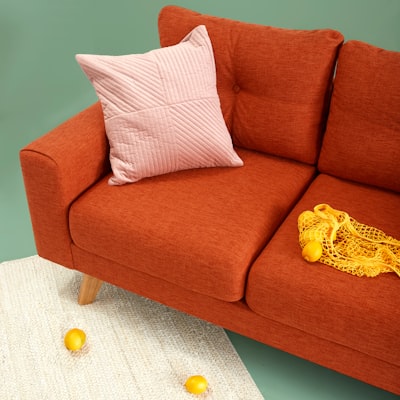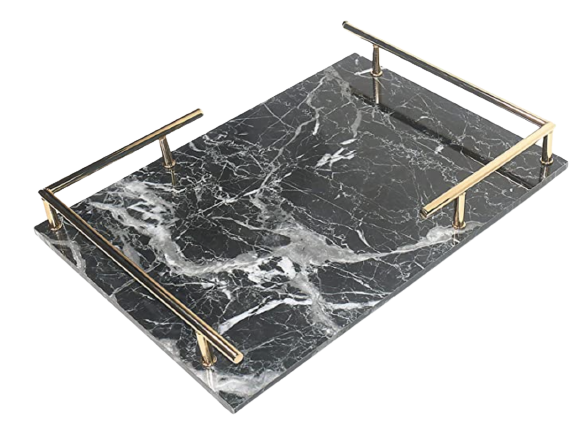Last Updated on March 8, 2024
Are you wondering how long your couch should last? A couch is not only a major investment but also a key piece of furniture in your home. It’s where you relax, entertain guests, and spend quality time with your loved ones. Therefore, understanding the lifespan of a couch is essential to ensure you get the most out of your purchase.
In this blog post, we will delve into the factors that influence the lifespan of a couch, signs that indicate it’s time for a replacement, and tips to extend its longevity. Additionally, we will discuss when and how to buy a new couch to make an informed decision that meets your needs.
Whether you’ve recently purchased a couch or have had one for years, this guide will provide valuable insights to help you make the most out of your furniture investment. So, let’s dive in and uncover the secrets to maximizing the lifespan of your couch.
Understanding the Lifespan of a Couch
When it comes to understanding the lifespan of a couch, it’s important to recognize that it can vary depending on several factors. While there isn’t a specific time frame that applies universally to all couches, certain considerations can give you a general idea of how long you can expect your couch to last.
One of the primary factors that influence the lifespan of a couch is the quality of materials used in its construction. Couches made with high-quality materials tend to be more durable and long-lasting compared to those made with lower-quality materials. For instance, couches with solid hardwood frames, high-density foam cushions, and durable upholstery fabrics are likely to have a longer lifespan.
Another factor to consider is the frequency and type of use. A couch that experiences heavy daily use, such as in a busy family room or a commercial setting, may wear out more quickly compared to a couch used infrequently in a formal living room. Additionally, the way you use your couch can impact its lifespan. Jumping or roughhousing on the couch, placing excessive weight on it, or using it as a makeshift bed can contribute to premature wear and tear.
Maintenance practices also play a crucial role in determining how long a couch will last. Regular cleaning, proper care, and timely repairs can significantly extend its lifespan. Neglecting maintenance, on the other hand, can lead to the accumulation of dirt, stains, and damage, causing the couch to deteriorate faster.
By understanding these factors, you can gain a better understanding of how long your couch is likely to last. However, it’s important to remember that individual circumstances can vary, and the lifespan of a couch ultimately depends on how well it is cared for. In the following sections, we will explore these factors in greater detail and provide practical tips on extending the lifespan of your couch.
Factors Influencing the Lifespan of a Couch
Several factors can influence the lifespan of a couch. Understanding these factors will help you make informed decisions when purchasing a couch and taking care of it. Let’s explore the key factors that can impact how long your couch will last:
Quality of Materials Used
The quality of materials used in the construction of a couch is a significant determinant of its lifespan. Couches made with superior materials tend to be more durable and resistant to wear and tear. Here are some materials to consider:
- Frame: The frame is the foundation of the couch. Couches with frames made of solid hardwood, such as oak or maple, are generally more durable than those made of softwood or engineered wood. Look for couches with reinforced corners and sturdy joinery techniques like dowels or screws.
- Cushioning: High-quality cushioning materials, such as high-density foam or down-filled cushions, are more resilient and provide better support than lower-quality alternatives. Foam cushions with a higher density tend to retain their shape and comfort for a longer time.
- Upholstery: The type of fabric or leather used for upholstery affects both the durability and the maintenance requirements of a couch. Durable upholstery fabrics like microfiber, leather, or tightly woven fabrics are more resistant to stains, fading, and general wear. Consider the durability, cleanability, and colorfastness of the upholstery material.
Frequency and Type of Use
How often and how the couch is used can significantly impact its lifespan. Factors to consider include:
- Daily Use: Couches used frequently, especially in high-traffic areas like family rooms or common areas, will experience more wear and tear than those used infrequently in formal living rooms. Consider the durability of the couch in relation to the level of usage it will endure.
- Activities: The type of activities performed on the couch can affect its lifespan. Couches used for lounging, entertaining, or as a bed for occasional guests may experience more stress and strain. If you have children or pets, consider choosing a couch that can withstand their activities.
Maintenance Practices
Proper maintenance practices are vital in preserving the lifespan of a couch. Here are some maintenance considerations:
- Regular Cleaning: Cleaning your couch regularly helps remove dirt, dust, and stains that can accumulate over time. Different upholstery materials may have specific cleaning requirements, so follow the manufacturer’s recommendations or consult a professional cleaner.
- Avoiding Moisture and Sunlight: Excessive exposure to moisture or direct sunlight can cause damage to the fabric or leather upholstery. Keep your couch away from windows or areas prone to humidity.
- Repairing Damage: Address any minor damage, such as loose seams or sagging cushions, promptly to prevent further deterioration. Regularly inspect your couch for signs of wear and tear and address them as needed.
By considering these factors and implementing proper care and maintenance practices, you can significantly extend the lifespan of your couch. In the following sections, we will discuss signs that indicate your couch may need replacement and provide tips on how to extend its longevity.
Signs Your Couch Needs Replacement
While couches are designed to be durable, there comes a point when they may show signs of wear and tear that indicate the need for replacement. Recognizing these signs will help you determine when it’s time to invest in a new couch. Here are some common indicators that your couch needs replacement:
Visible Wear and Tear
- Sagging or Uneven Cushions: Over time, the cushions of a couch may lose their shape and support, resulting in sagging or unevenness. If your cushions no longer provide adequate comfort or show visible signs of deformation, it may be time to replace them or consider a new couch altogether.
- Rips, Tears, or Frayed Upholstery: Excessive wear, tear, or damage to the upholstery can significantly impact the appearance and functionality of your couch. If you notice multiple rips, tears, or frayed edges that cannot be repaired effectively, it’s a clear sign that your couch needs replacement.
- Fading or Discoloration: Continuous exposure to sunlight can cause fading or discoloration of the upholstery fabric or leather. If your couch has significant color fading or uneven discoloration that cannot be restored, it may be time to consider a new one.
Uncomfortable Seating
- Loss of Support: As couches age, they may lose their supportive features, resulting in uncomfortable seating. If you find yourself sinking too much into the cushions or experiencing discomfort due to lack of support, it may be an indication that your couch has reached the end of its lifespan.
- Springs or Frame Issues: Over time, the springs or frame of a couch can weaken or become damaged, leading to a noticeable decline in comfort and stability. If you feel the springs poking through the cushions or notice any frame issues, it’s a clear sign that your couch needs replacement.
Persistent Odors
- Mold or Mildew Smell: If your couch has been exposed to moisture or damp conditions, it may develop a persistent mold or mildew smell. Despite thorough cleaning, if the odor persists, it can be an indication of underlying issues that may not be easily resolved. In such cases, replacing the couch is often the best option.
Frequent Allergies
- Allergic Reactions: If you or your family members experience frequent allergic reactions, such as sneezing, coughing, or skin irritations, that seem to be triggered when using the couch, it could be a sign of accumulated dust, pet dander, or other allergens within the upholstery. In such cases, replacing the couch with a hypoallergenic option may provide relief.
By paying attention to these signs, you can determine when it’s time to replace your couch. However, it’s important to note that some issues, such as minor tears or fading, may be repairable if you prefer to extend the lifespan of your current couch. In the next section, we will provide tips on how to extend the lifespan of your couch and prevent premature wear and tear.
How to Extend the Lifespan of Your Couch
To ensure that your couch lasts as long as possible, there are several proactive steps you can take to extend its lifespan. By implementing these practices, you can minimize wear and tear and keep your couch looking and feeling great. Here are some tips on how to extend the lifespan of your couch:
Proper Cleaning Techniques
Regular cleaning is essential for maintaining the appearance and longevity of your couch. Here are some cleaning techniques to consider:
- Vacuuming: Regularly vacuum your couch to remove dust, dirt, and debris that can accumulate in the upholstery. Use a brush attachment or a handheld vacuum cleaner to reach crevices and corners effectively.
- Spot Cleaning: Address spills and stains promptly by spot cleaning them with appropriate cleaning solutions. Refer to the manufacturer’s instructions or seek professional advice to ensure you use the correct cleaning method for your specific upholstery material.
- Professional Cleaning: Periodically, consider hiring professional upholstery cleaners to deep clean your couch. They have the expertise and equipment to remove embedded dirt, stains, and allergens effectively.
Using Couch Covers
Using removable and washable couch covers can offer an additional layer of protection for your couch. Here’s how they can help extend its lifespan:
- Protection from Stains and Spills: Couch covers act as a barrier between your couch and potential spills, stains, or pet accidents. They are easier to clean and replace than trying to clean the entire couch upholstery.
- Shield from Dust and Pet Hair: Couch covers can help prevent dust, pet hair, and other debris from settling directly on the couch’s fabric or cushions. Regularly washing or changing the covers keeps the couch cleaner and reduces the need for frequent deep cleaning.
Rotating Cushions Regularly
Rotating and flipping the cushions of your couch can help distribute wear and tear more evenly. Here’s how this practice can benefit your couch:
- Even Wear and Compression: Regularly rotating or flipping the cushions prevents one side from experiencing more compression than the other. This helps maintain the cushion’s shape and reduces the occurrence of sagging or unevenness.
- Balanced Usage: By rotating the cushions, you can evenly distribute the weight and pressure exerted on them. This extends the lifespan of the cushions and helps prevent premature wear.
Avoiding Excessive Weight and Rough Usage
Proper usage and avoiding excessive weight can significantly impact the longevity of your couch. Consider the following:
- Weight Limitations: Be mindful of the weight capacity specified by the manufacturer for your couch. Exceeding this limit can put excessive strain on the frame and cushioning, leading to damage or accelerated wear and tear.
- Gentle Handling: Avoid rough usage like jumping or plopping onto the couch, as this can strain the frame and weaken its structure. Encourage family members and guests to use the couch with care to prevent unnecessary damage.
By following these tips, you can extend the lifespan of your couch and keep it looking and feeling its best. However, it’s important to keep in mind that even with proper care, there may come a time when replacement is necessary. In the next section, we will discuss when and how to buy a new couch to ensure you make a well-informed decision.
When and How to Buy a New Couch
Knowing when and how to buy a new couch is crucial to ensure you make a well-informed decision that meets your needs and preferences. Here are some factors to consider when it’s time to replace your couch:
Deciding on the Right Time to Replace
- Irreparable Damage: If your couch has significant damage that cannot be effectively repaired, such as structural issues, extensive tearing, or worn-out cushions, it’s a clear indication that it’s time for a new couch.
- Comfort and Support: If your couch is no longer providing the comfort and support you desire, despite attempts to improve its condition, it may be time to invest in a new one. Your comfort and enjoyment should be a priority.
- Style and Design: If your current couch no longer fits your aesthetic preferences or the overall design of your space, it might be a good opportunity to refresh your living area with a new couch that complements your style.
Choosing a Couch for Longevity
When purchasing a new couch, consider the following factors to ensure its longevity:
- Quality Materials: Opt for a couch made with high-quality materials, such as a solid hardwood frame, durable cushioning, and upholstery fabrics or leathers known for their longevity. Research different materials and choose the ones that align with your preferences and lifestyle.
- Construction and Durability: Pay attention to the construction methods used in the couch, such as reinforced corners, sturdy joinery, and robust stitching. A well-constructed couch is more likely to withstand regular use and last longer.
- Comfort and Support: Test the couch’s comfort and support before making a purchase. Sit on it, lie down, and assess how it feels. Look for couches with adequate cushioning and proper back support to ensure long-term comfort.
- Size and Functionality: Consider the size and layout of your space, as well as your specific needs. Choose a couch that fits well in your room and offers the functionality you require, whether it’s extra seating, a sleeper option, or storage features.
Proper Installation and Initial Care
Once you’ve purchased your new couch, ensure proper installation and initial care:
- Follow Manufacturer’s Instructions: Read and follow the manufacturer’s instructions for installation, assembly, and care. This will help you set up the couch correctly and take the necessary steps to maintain its condition.
- Use Protective Measures: Consider using furniture pads or sliders to protect your new couch from scratches or damage when moving or rearranging it. This is particularly important if you have hardwood or delicate flooring.
- Regular Maintenance: Implement a regular maintenance routine for your new couch, including proper cleaning, rotating cushions, and addressing any minor issues promptly. This will help preserve its condition and extend its lifespan.
By considering these factors and taking the necessary steps, you can make an informed decision when buying a new couch and ensure its longevity. Remember to prioritize your comfort, style preferences, and the quality of materials and construction. With proper care, your new couch will provide you with years of comfort and enjoyment.










